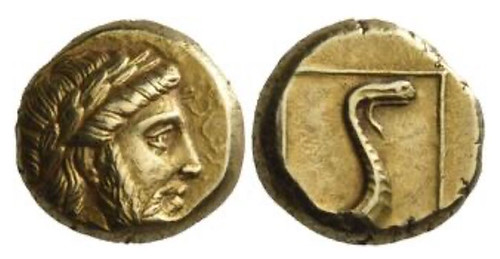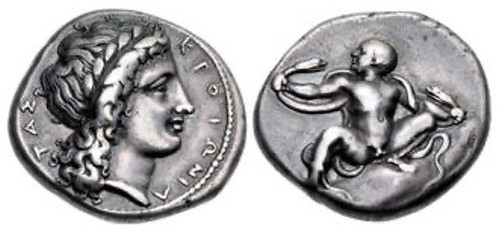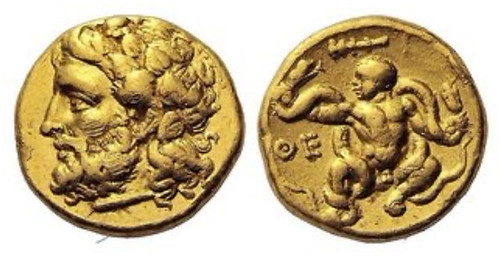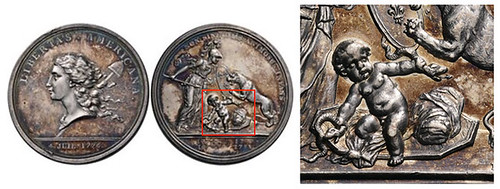
PREV ARTICLE
NEXT ARTICLE
FULL ISSUE
PREV FULL ISSUE
V25 2022 INDEX E-SYLUM ARCHIVE SNAKES ON ANCIENT COINSIn his latest CoinWeek article, Mike Markowitz examines snakes on ancient coins - even snakes with beards. Here's an excerpt - be sure to read the complete article online. -Editor
MOVING SILENTLY AND mysteriously without legs, the snake has always held a powerful grip on the human imagination. The snake is a complex and multi-dimensional symbol in Western art. At various times and places, it has represented fertility, rebirth, healing, and guardianship, as well as the forces of darkness and evil. In the CoinArchives Pro database, which records almost two million ancient coin auction sales that took place during the last two decades, a recent search for the term
Snakes with Beards Aelian) in his book De Natura Animalium explained that the beard showed that the creature was male. Lacking external sex organs, as well as legs, snakes present no visible indication of gender. A bearded snake appears on the reverse of a little electrum hekte of Mytilene on the Aegean island of Lesbos, c. 357-326 BCE.
Baby Herakles The birth of Herakles, son of Zeus and Alkmene, enraged Zeus' wife Hera, who tried to kill the infant by sending two serpents to strangle the sleeping baby in his crib. The following morning, the nurse discovered Herakles playing with the serpents' lifeless bodies: he had strangled one in each hand.
This striking image even has a name: Herakliskos drakonopnigon ( In 1783, when Benjamin Franklin, American ambassador to France, commissioned a silver medallion celebrating victory over Britain, the image of the infant killer of snakes was chosen to symbolize America.
To read the complete article, see:
Wayne Homren, Editor The Numismatic Bibliomania Society is a non-profit organization promoting numismatic literature. See our web site at coinbooks.org. To submit items for publication in The E-Sylum, write to the Editor at this address: whomren@gmail.com To subscribe go to: https://my.binhost.com/lists/listinfo/esylum All Rights Reserved. NBS Home Page Contact the NBS webmaster 
|




